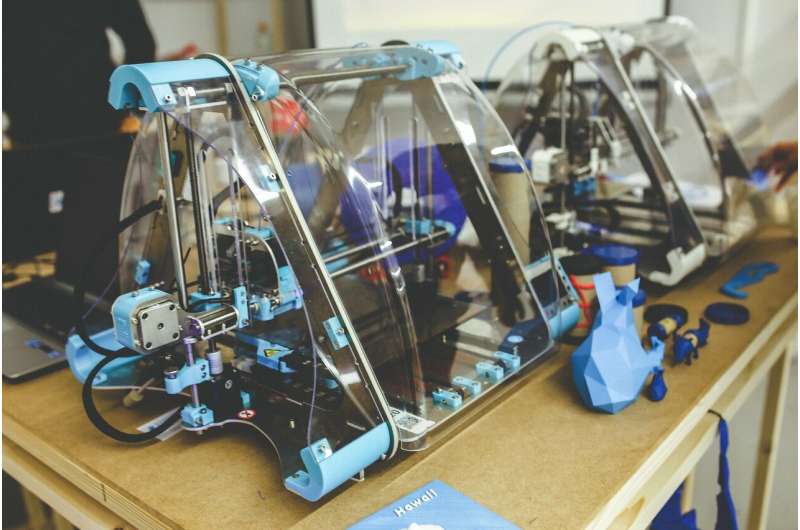Strength in numbers for 3-D printing

Additive manufacturing, also called 3-D printing, is commonly used to build complex three-dimensional objects, layer by layer. A*STAR researchers have shown that the process can also help to make a high-performance alloy even stronger.
Cobalt-chromium-iron-nickel-manganese (CoCrFeNiMn) is known as a high entropy alloy. Discovered in 2004, it is particularly good at withstanding fractures under harsh environmental conditions, such as low temperatures. To make an object from the alloy, researchers typically pour the molten metal into a cast, allow it to cool, and then machine it into the desired shape. However, this can be a time-consuming and costly way of making complex components. In principle, additive manufacturing could skip the machining step to directly fabricate complex components.
Nai Mui Ling Sharon of the A*STAR Singapore Institute of Manufacturing Technology (SIMTech), her colleagues, and international collaborators have shown that an additive manufacturing method, called selective laser melting, is well suited to building components from CoCrFeNiMn. The process uses a powerful laser beam to melt tiny powder particles of the alloy, which then fuse to make a solid object. Remarkably, the researchers found that the process actually produces a stronger material than conventional casting methods. "It exhibits an enhanced strength with a relatively good ductility," says Zhu Zhiguang, a research fellow in the SIMTech team that led the study.
The researchers first created a pre-alloyed powder of CoCrFeNiMn, containing particles that were an average of 36 micrometers across. Then they used laser melting to craft the particles into 10-millimeter-wide cubes, or flat bars of 90 millimeters. They also varied the laser's power, and the speed that it scanned over the alloy particles, to understand how different printing conditions affected the alloy's performance.
Analysis of the samples revealed a number of features that determined the material's properties. For example, it contained microscopic melt pools, rather like miniature welds that held the material together. It also contained elongated crystalline grains that were roughly 13 micrometers across; these grains were subdivided into smaller 'cells' less than one micrometer wide. The researchers found that these cells played a crucial role in strengthening the alloy.
Crystals contain a regular array of atoms arranged in repeating patterns. Large crystals often cleave fairly easily—if the atoms in one part of the crystal slip out of place, they force neighboring atoms to slip in the same way, sending a fracture racing through the entire crystal.
But materials formed from many smaller grains can avoid this problem. That's because the crystal structure of each grain may not line up with its neighbors, so any atomic dislocations stop as soon as they reach a grain boundary.
The minuscule cells in the researcher's alloy seem to enhance this strengthening effect, trapping dislocations and offering a major improvement in the material's strength. One of the printed alloys, prepared using optimized printing conditions, could withstand 510 megapascals of stress before it started to permanently deform. This is almost twice the stress that a conventionally prepared CoCrFeNiMn alloy can handle.
The researchers then heated their 3-D-printed objects at 900 degrees Celsius for one hour under an inert atmosphere. This partially removed the cellular structure and reduced the material's strength, but it also made the material more ductile, enabling it to deform further.
The researchers hope that tweaking the 3-D-printing processes could further enhance the mechanical properties of the materials. They also plan to use selective laser melting to fabricate other high performance alloys, so that they can study how the microscopic structure of the materials affects their properties. "With this understanding, we will be better equipped to tailor their properties for industrial application, and help to accelerate the adoption of additive manufacturing," says Nai.
More information: Z.G. Zhu et al. Hierarchical microstructure and strengthening mechanisms of a CoCrFeNiMn high entropy alloy additively manufactured by selective laser melting, Scripta Materialia (2018). DOI: 10.1016/j.scriptamat.2018.05.015
Journal information: Scripta Materialia





















